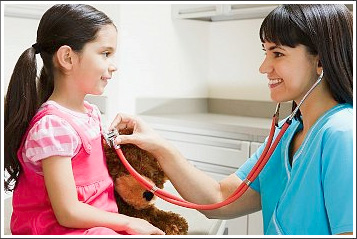Glut of blue disabled placards costing some US cities millions in parking revenue
A blue placard dangling from the rear-view mirror is the equivalent of parking gold for drivers in many cities – they can park for free and for as long as they want. Now there’s a gold rush on for them.
And as the number of vehicles displaying a disabled placard has soared with an aging population and loosened eligibility standards, cities are seeing the impact in more congested downtowns and the loss of millions of dollars in revenue.
Now, officials are pushing back, tightening standards for those who can get the placards and making sure that the only people who get the privilege are those who really need it.
“It was astonishing to see car after car with the disabled placard,” said Portland City Commissioner Steve Novick, who is seeking a solution to the problem in a city with a reputation for bicycling and mass transit but still reliant on the car.
Authorities issued 186 citations for unlawful use of a permit the fiscal year ending June 30, but believe there is more abuse.
Cheaters are tough to catch because the placard is generally valid and the driver, who may be borrowing one, is only at the car for a couple of minutes during the workday.
Experts say the easiest way to stop abuse is to make the disabled pay the meter, especially those not in wheelchairs. Places such as Philadelphia, Raleigh, N.C., and Arlington County, Va., did so and there was more turnover in the spots.
The Illinois Legislature passed a law that takes effect next year in which free-metered parking will be reserved for only the most severely disabled residents. It was spurred in part by Chicago’s decision to privatize its parking meters. As part of the deal, it agreed to reimburse the company for free parking provided to holders of disabled placards. The tab since 2009: $55 million.
“Economically, a free parking pass is a very nice thing to have, and there are always enough people who are a bit unscrupulous when it comes to parking that you can’t expect self-restraint,” said Donald Shoup, a UCLA urban planning professor and author of “The High Cost of Free Parking.”
On one block in the financial district, placards consumed 80 percent of the total meter hours. Though the spaces were occupied 95 percent of the time, meters that charged $4 an hour collected an average of only 28 cents an hour.
California started issuing placards in 1959 to people unable to move without a wheelchair. Within two decades, it was expanded to include people with breathing problems and general mobility problems.
“We looked back from 1990 to 2010, even normalized for population growth, there was a 350 percent increase in the number of placards issued in California,” Williams said. “Even if there was no abuse, there are a lot of placards in circulation.”
Oregon has issued placards to 354,000 of its 3 million drivers. Those authorized to sign a permit include doctors of medicine, chiropractors, osteopaths, podiatrists, optometrists, naturopaths, nurse practitioners and physician assistants.
Portland’s Disabled Parking Task Force asked the Oregon Medical Association in 2010 to remind doctors about the impact of improper placards, and recommended temporary permits instead of ones that can be valid for years until a driver’s license expires.
Betty Brislawn, 84, uses a placard because she has chronic obstructive pulmonary disease.
A task force member, Brislawn said there are many cheaters, but you can’t assume people with internal problems are less worthy of a placard than those in wheelchairs.
“My oxygen level, if I walk fast, will go down to 83 and that means I’m in really dire trouble; I could pass out,” she said. “But otherwise I look fine.”
Novick doesn’t have a placard, though he was born with missing fibula bones and no left hand. The 4-foot-9 commissioner said ensuring open spaces for those with severe mobility problems should be the city’s focus.
“Being really short, I would kind of like it if grocery stores had tongs you could use to take things off the top shelf,” he joked. “That would be a good accommodation, but I still think I should have to pay for the groceries.”
Read more: http://www.foxnews.com/health/2013/09/06/sea-blue-disabled-placards-in-many-us-cities/#ixzz2eBf5FLsJ











 A new study has found that game consoles have five times more germs than toilet seats.
A new study has found that game consoles have five times more germs than toilet seats. Traumatic brain injury is a hidden epidemic in the US, reaching beyond American football to wounded military veterans and girls’ soccer players. Neurosurgeon Dr Anand Veeravagu outlines concussion’s potentially devastating side effects.
Traumatic brain injury is a hidden epidemic in the US, reaching beyond American football to wounded military veterans and girls’ soccer players. Neurosurgeon Dr Anand Veeravagu outlines concussion’s potentially devastating side effects.

